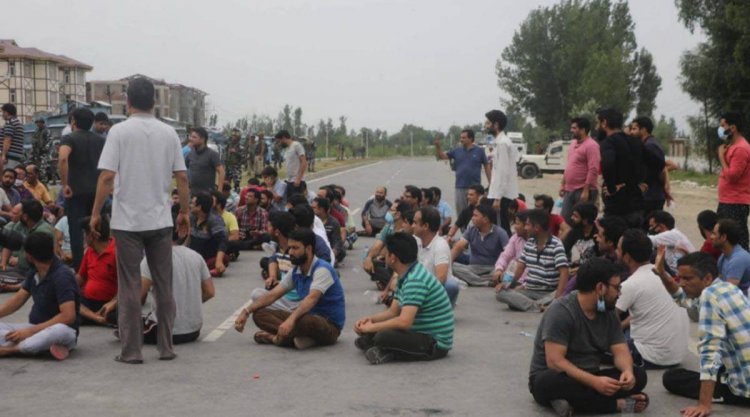Jammu and Kashmir: Targeted Killings
Asia News Agency

Jammu and Kashmir’s Shopian district witnessed two incidents of targeted killings in just four days. A Kashmiri Pandit farmer was gunned down by terrorists outside his ancestral house on 15 September; two labourers from Uttar Pradesh were killed when a grenade was thrown inside their rented accommodation Tuesday.
The fresh bout of violence, writes The Tribune “comes amid a clamour by various political parties to hold early Assembly elections, even as the tourist season is in full bloom in the Valley. The killings are apparently an attempt to disturb peace and scuttle the long-delayed electoral process, under which the delimitation exercise was completed earlier this year.”
Low-profile assailants: The killers, “low-profile assailants, quietly radicalised by anti-India forces, have been targeting civilians, police personnel, political workers and migrant labourers. The law enforcement and intelligence agencies need to go all out to ferret out these terrorists and their handlers so as to prevent more bloodshed and send out the stern message that the rule of law prevails in the Valley.”
What should the government do
Meanwhile, during a recent visit to Baramulla, Home Minister Amit Shah had declared that he would listen and talk to the people of the Valley, not to Pakistan. This was an attempt to reach out to the Kashmiris and dissuade them from falling prey to Pakistani propaganda. The Centre, suggests the paper “should reiterate that the resumption of dialogue with Pakistan is not feasible unless the latter shuns its old agenda of bleeding India with a thousand cuts. At the same time, the Union government can’t afford to snub regional leaders, who have considerable sway among the Kashmiris. Cracking down on terrorism and bridging the trust deficit are prerequisites for the return of the ballot in J&K.”
In the view of The Hindustan Times “it is now fairly clear that a purely securitised response is not likely to yield satisfactory results. After all, the first targeted killings rocked the Valley in late 2019 when five migrant workers were gunned down in Kulgam district. And though security forces regularly track down those responsible for these attacks, and say they’ve killed many perpetrators, the frequency and accuracy of these strikes point to a deeper malaise.”
What these attacks achieve
These attacks however, according to The Hindu “reflect the desperation of radical elements in the separatist current in the Valley, who rely on such murders to create a fear psychosis, invite inevitable state repression in retaliation, and seek to exploit the discontent and disaffection from state actions….
“The attacks and killings also suggest the failure of the Union government’s decisions — the dilution of Article 370 and the bifurcation of J&K — in arresting the trend of violence in the Valley in the latter part of the last decade. Worse, the renewed violence against minorities reflects the deterioration of the situation in the Valley just a few years after democratic participation had improved steadily, reflecting a sense of ease with the mainstream polity among the citizenry. That these attacks have continued with impunity calls into question whether the authoritarian turn to governance in Kashmir has had any fruitful impact….”
















